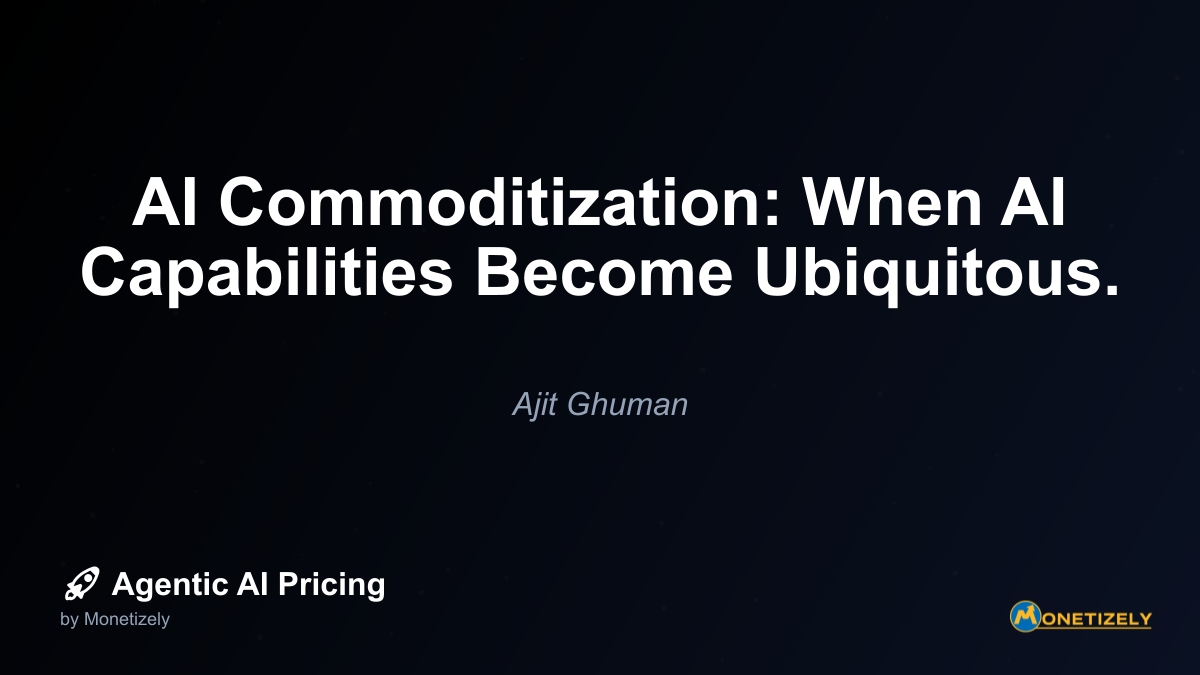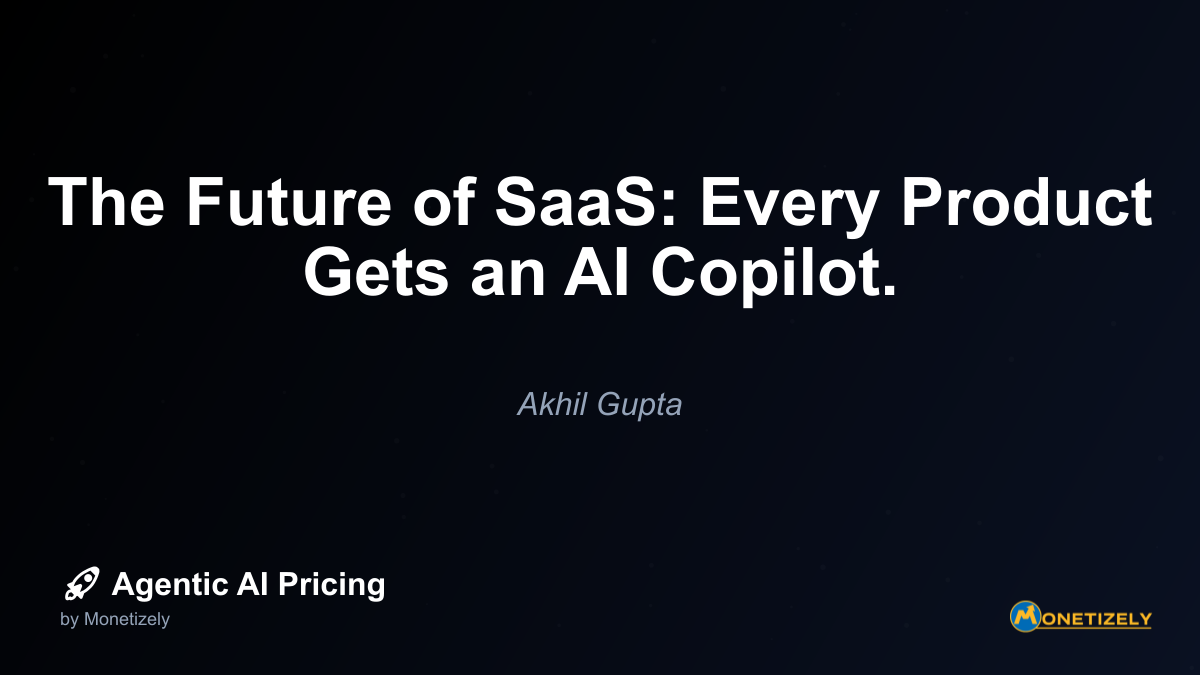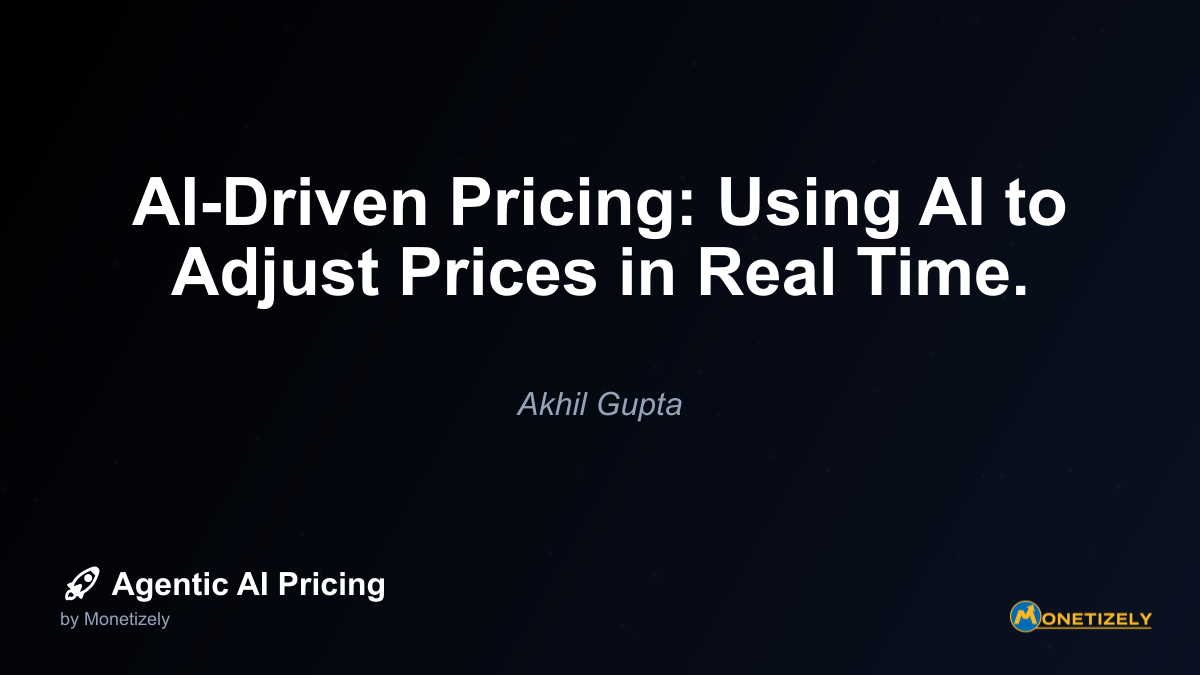· Ajit Ghuman · Emerging Trends · 7 min read
AI Commoditization: When AI Capabilities Become Ubiquitous.
AI and SaaS Pricing Masterclass
Learn the art of strategic pricing directly from industry experts. Our comprehensive course provides frameworks and methodologies for optimizing your pricing strategy in the evolving AI landscape. Earn a professional certification that can be imported directly to your LinkedIn profile.

Companies that pursue pure price competition often find themselves in a precarious position. As Alex Chen, VP of Product at an enterprise AI platform, notes: “When you compete solely on price for commoditized AI capabilities, you’re essentially saying your only value proposition is being the cheapest option. That’s rarely sustainable unless you have significant scale advantages.”
Instead, forward-thinking companies are adopting value differentiation strategies:
- Vertical specialization: Tailoring AI solutions for specific industries with unique needs
- Performance guarantees: Offering SLAs that generic or open-source alternatives cannot match
- Integration and workflow optimization: Making AI capabilities seamlessly fit into existing business processes
- Proprietary data advantages: Leveraging unique datasets that improve model performance
- Compliance and security assurances: Providing enterprise-grade security and regulatory compliance
Shift from Core AI to Complementary Services
As base AI capabilities become commoditized, the monetization focus naturally shifts to complementary services and features:
Support and Implementation Services
Enterprise customers often value comprehensive support, implementation assistance, and ongoing optimization more than marginal improvements in the underlying AI capabilities. This creates opportunities for premium service tiers that include:
- Dedicated technical account managers
- Custom model fine-tuning
- Integration specialists
- 24/7 support with guaranteed response times
- Regular performance reviews and optimization
Proprietary Data Advantages
While the algorithms themselves may become commoditized, proprietary data remains a powerful differentiator. Companies with unique, high-quality datasets can maintain premium pricing even as underlying AI technologies become standardized.
“The real moat isn’t the model architecture anymore—it’s the data,” explains Dr. Sarah Williams, Research Director at the Institute for AI Economics. “Companies that own proprietary datasets that improve model performance in specific domains can maintain pricing power even as the base models become commoditized.”
Ecosystem and Platform Strategies
Platform strategies offer another path to value preservation amid commoditization. By creating ecosystems that combine multiple AI capabilities with complementary services, companies can increase switching costs and maintain pricing power.
Microsoft’s approach with Azure AI and GitHub Copilot exemplifies this strategy. Rather than competing solely on the performance of individual AI services, they’ve created an integrated ecosystem that delivers value beyond the sum of its commoditized parts.
Case Studies: Responses to AI Commoditization
OpenAI’s Evolving Strategy
OpenAI’s journey illustrates the commoditization challenge in real-time. When GPT-3 launched, it represented a significant leap in capabilities with few direct competitors. However, as similar models emerged from competitors and open-source alternatives gained traction, OpenAI has progressively shifted its strategy:
- Accelerating innovation: Rapidly releasing GPT-4 and multimodal capabilities to stay ahead of commoditization
- Developing specialized offerings: Creating custom solutions for enterprise needs
- Building platform value: Establishing an ecosystem of tools and plugins that increase switching costs
- Vertical integration: Moving into end-user applications like ChatGPT to capture more value
Google’s Dual Approach
Google has adopted a fascinating dual strategy in response to AI commoditization:
- Premium differentiation: Offering enterprise-grade Vertex AI with performance guarantees, compliance features, and integration with Google Cloud
- Open-source contribution: Simultaneously releasing powerful models like BERT and T5 to the open-source community
This approach allows Google to maintain premium pricing in enterprise contexts while still influencing the direction of the broader AI ecosystem.
Hugging Face’s Community-Centric Model
Hugging Face has embraced and accelerated commoditization through its open model repository, while building a business model around enterprise features, hosting, and specialized services. By becoming the central hub for commoditized AI models, they’ve created network effects that allow them to monetize through complementary services rather than the models themselves.
Strategic Responses to AI Commoditization
For companies navigating the commoditization of AI capabilities, several strategic approaches have proven effective:
Tiered Service Strategies
Implementing tiered service strategies allows companies to address different market segments while preserving premium pricing options:
- Free tier: Basic access to commoditized capabilities, often with usage limitations
- Professional tier: Enhanced performance, higher usage limits, and basic support
- Enterprise tier: Custom solutions, guaranteed performance, dedicated support, and compliance features
This approach acknowledges commoditization at the lower tiers while creating value differentiation at higher tiers.
Outcome-Based Pricing Models
As AI capabilities become commoditized, shifting from input-based pricing (e.g., per API call) to outcome-based pricing creates alignment with customer value:
- Risk-sharing arrangements: Pricing based on measurable business outcomes
- Success fees: Charging based on specific achievements rather than usage
- Value-based subscriptions: Pricing tiers based on business impact rather than technical specifications
Ecosystem and Platform Development
Building ecosystems that combine multiple AI capabilities with workflow tools, integrations, and complementary services creates value beyond the commoditized components:
- Workflow automation: Embedding AI into end-to-end business processes
- Interoperability: Creating seamless connections between multiple AI services
- Developer tools: Providing specialized development environments
- Marketplace strategies: Creating platforms where third-party developers can build on your foundation
Developing a comprehensive framework for pricing agentic AI products becomes essential as the market matures and commoditization increases.
The Future of AI Value in a Commoditized Landscape
Looking ahead, several trends are likely to shape how value is created and captured as AI commoditization continues:
Specialized AI Will Resist Commoditization Longer
While general-purpose AI capabilities are rapidly commoditizing, specialized AI solutions tailored to specific industries or use cases will maintain value differentiation longer:
- Healthcare diagnostic AI: Requiring specialized medical knowledge and regulated datasets
- Financial risk assessment: Needing compliance with complex regulatory requirements
- Industrial optimization: Demanding deep domain expertise and proprietary operational data
These specialized applications benefit from higher barriers to entry and more defensible value propositions.
Human-AI Collaboration Will Become a Key Differentiator
As base AI capabilities commoditize, the quality of human-AI collaboration interfaces and workflows will become increasingly important differentiators:
- Intuitive interfaces: Making AI capabilities accessible to non-technical users
- Explanation and transparency: Providing understandable rationales for AI decisions
- Feedback incorporation: Efficiently improving performance through human guidance
- Workflow integration: Seamlessly fitting AI capabilities into existing business processes
Data Network Effects Will Create New Moats
As algorithms become commoditized, proprietary data advantages will become more critical competitive differentiators:
- Data flywheel effects: Services that improve as they collect more user data
- Cross-product data synergies: Companies leveraging data across multiple product lines
- Collaborative data networks: Consortiums sharing data while preserving privacy
Companies that can establish these data advantages will maintain pricing power even as underlying AI technologies become standardized.
Practical Strategies for AI Business Leaders
For executives navigating the commoditization of AI capabilities, several practical strategies can help maintain value and pricing power:
Conduct Regular Value Differentiation Audits
Regularly assess which aspects of your AI offerings are becoming commoditized and which continue to provide unique value:
- Capability mapping: Document all AI capabilities and assess their uniqueness
- Competitive benchmarking: Compare performance and features against alternatives
- Customer value research: Identify which elements customers truly value
- Commoditization forecast: Predict which capabilities will commoditize next
This process helps prioritize investment in areas that will maintain differentiation.
Invest in Complementary Assets
Identify and develop complementary assets that create value beyond the commoditized AI capabilities:
- Specialized datasets: Acquire or develop unique data that improves model performance
- Domain expertise: Cultivate knowledge that helps apply AI to specific contexts
- Integration capabilities: Build connectors to popular enterprise systems
- Community and ecosystem: Develop networks that increase switching costs
Shift Messaging from Technology to Outcomes
As AI capabilities commoditize, marketing and sales messaging should evolve from technical specifications to business outcomes:
- Before commoditization: “Our NLP model achieves 95% accuracy on benchmark X”
- After commoditization: “Our solution reduces customer service costs by 35% while improving satisfaction scores”
This shift helps maintain value perception even as the underlying technology becomes standardized.
Embrace Selective Open Source Participation
Strategic participation in the open-source AI ecosystem can be advantageous even as it contributes to commoditization:
- Influence standards: Shape the direction of AI development
- Talent attraction: Engage with the broader AI community
- Complementary monetization: Build business models around the open core
Companies like Hugging Face and Stability AI demonstrate how embracing open source can be compatible with building sustainable business models.
Conclusion: Thriving in the Age of AI Commoditization
The commoditization of AI capabilities represents both a challenge and an opportunity for businesses. While downward price pressure on basic capabilities is inevitable, new sources of value creation and differentiation are emerging.
Successful strategies will likely combine:
- Continuous innovation to stay ahead of the commoditization curve
- Vertical specialization to address specific industry needs
- Complementary services that add value beyond the base AI capabilities
- Ecosystem development to increase switching costs
- Outcome-based pricing that aligns with customer value
Organizations that recognize the reality of AI commoditization and proactively adapt their strategies will find themselves well-positioned to thrive in this evolving landscape. Rather than fighting against commoditization, forward-thinking companies will leverage it as a catalyst for developing more sustainable and customer-aligned value propositions.
As the AI industry matures, the winners won’t necessarily be those with marginally better algorithms, but those who most effectively integrate AI capabilities into solutions that deliver measurable business outcomes. In this environment, pricing strategies must evolve from technology-centric to value-centric approaches that reflect the true impact of AI on customer success.
Co-Founder & CEO
Ajit is the author of Price To Scale, a top book on SaaS Pricing and is the Founder of Monetizely. Ajit has led and worked in pricing and product marketing at firms like Twilio, Narvar and Medallia. His work has been featured in Forbes and VentureBeat. Ajit regularly consults with software companies from Seed stage to post-IPO on pricing strategy. Ajit is also a highly-rated co-instructor for 'The Art of SaaS Pricing and Monetization' on Maven.
Pricing Strategy Audit
Let our experts analyze your current pricing strategy and identify opportunities for improvement. Our data-driven assessment will help you unlock untapped revenue potential and optimize your AI pricing approach.




